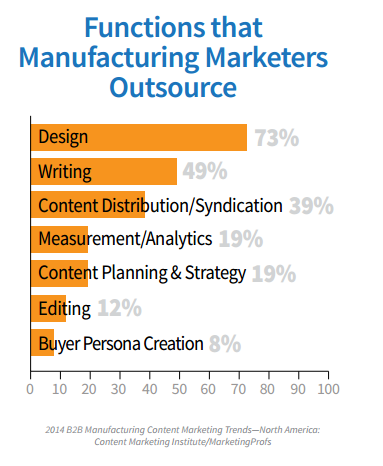
by Fronetics | Nov 13, 2014 | Blog, Marketing, Social Media, Strategy, Supply Chain

Founded in 1997, Cerasis is a top North American third party logistics company offering logistics solutions with a strong focus on LTL freight management. For 15 years the company utilized traditional marketing strategies – placing ads in glossy industry publications (print) and relying heavily on referrals. This strategy was effective. The company acquired new customers, retained current customer, and realized positive growth. However, Cerasis was not attracting larger and more sophisticated shippers, and brand awareness was low. Moreover, Cerasis was not perceived as a leader within the industry. The company recognized that in order to catch the attention of their preferred customers, increase brand awareness, and be perceived as a leader within the industry they needed to make substantial changes to their marketing strategy. To overcome these challenges Cerasis decided to shift from their traditional approach to an inbound marketing strategy.
Strategy matters
Understanding that strategy is critical to success, Cerasis took the time to put a strategy in place. Taking a research-based approach to strategy development, Cerasis studied internal company data, trends, and metrics and conducted market research. Using this information Cerasis determined the type of messaging it wanted to share, identified their target audience (buyer persona), and identified the platforms it felt would be the most effective.
Adam Robinson, Director of Marketing at Cerasis, notes that the company took a measured approach:
“Once we had a strategy in place we needed to execute it. We started simply – we posted one piece of content each day.”
Revenue matters
Cerasis’ strategy paid off. Within 25 months Cerasis realized a 14% increase in revenue. This increase was directly attributable to inbound marketing. In addition this stream of revenue, the company’s sales team was able to generate revenue totaling $20 million during this period – more than double the previous two years combined. This can also be linked to the company’s inbound marketing efforts as they increased the company’s brand awareness and positioned Cerasis as a leader within the industry.
To learn more about Cerasis’s approach to inbound marketing and the results realized, download the case study: 3PL Cerasis acquires 98 new customers through inbound marketing.

by Fronetics | Sep 24, 2014 | Blog, Marketing, Social Media, Supply Chain, Talent
“Practice makes perfect.” This is what we have been told by our parents, our teachers, Malcolm Gladwell, and researchers. And, as pointed out by Fast Company, “There’s even a Macklemore song about it, so that makes it real.”
Here’s the problem – it’s not real. A 2014 study found that practice doesn’t make perfect. Instead, reaching a mastery level of whatever it is that you are trying to reach is dictated by your personality, intelligence, and a number of other factors.
Where does that leave us? For business it reaffirms the adage: “Do what you do best, and outsource the rest.”
During a Small Business Week panel discussion Gene Marke, Inc. columnist and owner of the Marks Group, discussed the importance of strategic partnerships and outsourcing:
“One of the smartest things I’ve been seeing companies do is that they do what they do best and outsource the rest. Companies are now thinking more about partners they can work with to provide the type of technologies, services, and solutions they cannot do or don’t have time to do.”
Dan Leberman, the vice president and general manager of PayPal’s North American online small and medium business unit, expressed similar sentiments:
“It’s all about knowing your company’s core competencies. As a small business, you need to decide what you’ll build and what you’ll give to a partner.”
The supply chain and logistics industries have been slower to adopt social media and inbound marketing than other industries. Reasons for this include: a lack of understanding of the benefits, lack of experience, and both time and budget constraints. In short, inbound marketing and associated activities including content creation and social media management are great examples of what companies within the supply chain and logistics industry should consider outsourcing.
A 2014 study found that 86 percent of manufacturing marketers have adopted content marketing and that the majority (55 percent) of companies look to outsource partners for help.
As shown below, manufacturing marketers outsource a variety of content functions including writing, distribution, design, and editing.

Now that we know practice doesn’t make perfect – play to your company’s strengths and considering outsourcing the rest.

by Fronetics | Sep 17, 2014 | Blog, Marketing, Strategy, Supply Chain

At Fronetics we work with companies within the supply chain and logistics industries to reach their business and marketing goals. We work with our clients to identify and execute strategies that produce results.
As discussed in a previous post, too often I see companies who have invested time and money into developing a B2B inbound marketing strategy and have fallen flat. Reasons include: a lack of strategy and commitment; not targeting the ideal customer; not publishing content consistently; not creating quality content; and being too focused on sales.
Is your current marketing strategy working? Does your website attract and engage? Does your website generate leads? Does your company generate leads via social media?
How many times did you answer “I don’t know,” or “no?” Be honest.
We are offering a free marketing assessment. The assessment includes a discussion focused on your current goals and challenges, an evaluation of the competitive landscape, and actionable strategies to help you grow your business.
Don’t worry, there is no fine print and there are no obligations.


by Fronetics | Sep 16, 2014 | Blog, Content Marketing, Marketing, Social Media, Strategy, Supply Chain

I work with companies from the supply chain and logistics industries to identify and execute strategies that will grow their business. Too often I see companies who have invested time and money into developing a B2B inbound marketing strategy and have fallen flat. Here are six reasons why inbound marketing strategies tend to fail:
The ideal customer is not being targeted
A successful inbound marketing strategy will attract and engage the “right people” – ideal customers. It is therefore essential that time is taken to understand who the ideal customer is, the needs of the customer, and the customer’s pain points. Your company’s website, social media presence, and email communications, should speak to your ideal customer.
Content is not published consistently
A common pitfall is establishing a blog, but only publishing content on a sporadic basis. To establish your company as an industry leader and gain leads, you need to publish content on a consistent basis. For example, your company needs to commit to publishing blog content every Tuesday.
Content is not quality content
All content is not equal. If you want your inbound marketing efforts to succeed, your content needs to be quality content. Your content should be well-researched, sourced, and edited. Grammatical errors and misspellings are inexcusable.
More isn’t always better
It is easy to sign up for a social media account. I’ve seen many companies who have decided to jump into social media feet first and have established many social media accounts, only to become overwhelmed. If you want your inbound marketing strategy to succeed, it is more important to be active on one social network than inactive on five.
Lack of strategy and commitment
A 2014 study of B2B marketers found that companies that have a strategy in place are more likely to consider their efforts effective than companies that do not have a stated strategy in place. Companies that do not have a strategy in place, and who do not have someone in charge of the strategy tend to fail.
A focus on sales
Content that informs and educates attracts and engages. Content that is “salesy” not only fails to attract and engage, it turns customers away.
Is your inbound marketing strategy falling flat? Assess your strategy – honestly. Has your company fallen prey to these common pitfalls?

by Fronetics | Sep 4, 2014 | Blog, Marketing, Supply Chain

The temptation is obvious: You want to use your business blog to proclaim the virtues of your excellent products. You throw around words like “unique,” “outstanding,” “robust,” and “industry-leading.”
Perhaps you even add a blinking “Buy Now!” button at the end, convinced your reader simply can’t resist hitting it.
There is only one problem: Your sales pitch made your prospective customer tune out long before they reached the last paragraph.
Imagine the following scenario: You enter a car dealership and are greeted by an enthusiastic sales agent, grinning ear to ear. He launches into his pitch about mega sales and the best deal of the century. Any question from you is brushed aside as he has more to say about the car model that he has decided you must have. Turned off by his sales strategy, you make a quick exit.
Or think of another example: A sales representative from a company whose website you browsed a few days ago follows up with a call and leaves a voice mail. The message is friendly. She does her best not to sound pushy. She introduces her “leading” company, which offers “a wide range of services” and a “one-stop-shop” for all your needs. By the time she reaches, “I look forward to meeting you,” you’re still ready to hit the delete button. Again, the voice mail was loaded with sales lingo.
As strange as it may sound, being “salesy” is bad for business. HubSpot, a marketing consulting service and software developer, goes as far as calling it one of the “7 Deadly Sins of Inbound Marketing.”
It reads:
Sin 3: Gluttony – Don’t be gluttonous and stuff your content with information about your company products. Focus on solving problems and helping your customers and community first and not jamming your product pitch down their throats.
Let’s go back to the two examples above and transfer the line of thought to your blog. Rather than forcing your products on your prospective customers, take time to answer their questions. You are there for them. They may be in the beginning of their buyer’s journey and far from ready to sign off on a brand new car. Perhaps they entered that dealership to browse, to check out the view behind the steering wheel.
And what if that voice mail had been phrased differently? What if the sales representative had spent a moment talking about what your browsing history said about the problems you’re seeking solutions to and presented some real-life proof of how her company could help? Basically, she would have been more effective showing how her company can deliver value to you. The same goes for your blog.
Here’s what you should do:
- Stay informative and educational.
- Demonstrate market expertise.
- Sound like a business peer.
- Focus on topics and questions of crucial importance to your target audience.
The bottom line: If you want to make a sale, stop selling.






